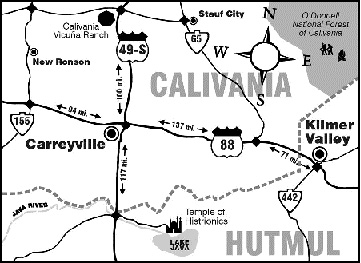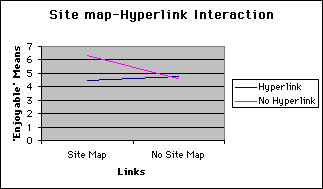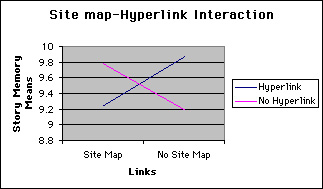Media Effects Research Lab - Research Archive
The effects of hyperlinks and site maps on the memorability and enjoyability of web content
Student Researcher(s)
Marlin D. May (Masters Candidate);
Faculty Supervisor
FOR A COMPLETE REPORT OF THIS RESEARCH, SEE:
May, M. D., Sundar, S. S., & Williams, R. B. (1997, May). The effects of hyperlinks and site maps on the memorability and enjoyability of web content. Paper presented at the 47th annual conference of the International Communication Association (ICA), Montreal, Canada.
INTRODUCTION
The presence of hyperlinks differentiates World Wide Web (WWW) documents from documents presented using other media. WWW users navigate within and between documents using hyperlinks. However the presence of hyperlinks can also make a website difficult to navigate. This difficulty can probably be alleviated by providing a map of the website. Does this have an effect on the memorability of the website? In addition, does it affect users' enjoyability of Web content? This study attempts to discover the linkage, or lack thereof, between the use of hyperlinks and/or the use of site maps in websites and the memorability and enjoyability of website content.

HYPOTHESES
Previous research findings indicate that a site map can help a user navigate through a WWW document, while using fewer mental resources to maintain orientation, and therefore having more mental resources available for memory tasks. This leads to the following hypothesis:
H1: Users exposed to WWW-delivered hypermedia that includes a map of the hypermedia object will have higher scores of recognition memory than users exposed to an identical hypermedia object without the map.
Previous research findings also suggest that a user exploring a document composed of relational hyperlinks will be more likely to get lost and spend more time navigating, thereby leading to a decrease in memorability of the document. This leads to the following hypothesis:
H2: Users exposed to hypermedia that includes relational hyperlinks will score lower on recognition than users exposed to a document containing identical information without hyperlinks.
METHOD
Thirty-six participants took part in a mixed-design experiment, wherein they browsed one of four websites designed especially for this experiment. The four experimental conditions were: No links and no site map; No links and a site map; Links and no site map and; Links and a site map. Participants were exposed to the relevant condition for a period of 15 minutes. They were allowed to explore the document however they pleased, but their access to the wider Internet from the document was blocked. After exposure, participants were asked to fill out a pencil-and-paper questionnaire, containing items pertaining to recognition as well as enjoyment.
RESULTS
H1: Not Supported. The presence of site maps did not lead to higher recognition memory scores.
H2: Not Supported. The presence of relational hyperlinks did not lead to lower recognition scores.
However, an interesting interaction effect was found such that when both site maps and hyperlinks were present or absent from a document, participants tended to have lower story memory scores than when one factor was present and the other was absent.


CONCLUSION
The negative interaction between the site map and hyperlinks indicates a specific situation a website designer would be wise to avoid, as users encountering such a site would find it less memorable, less enjoyable and more confusing than sites using just hyperlinks or a site map. Also, the findings from this study indicate that website developers should construct and provide a conceptual map of the document, one which depicts how the ideas in the document relate to one another. An important implication is that the prudent website builder should test the nodes he/she is considering introducing into a site to verify that users interact with them in the way he/she intends.
For more details regarding the study contact
Dr. S. Shyam Sundar by e-mail at sss12@psu.edu or by telephone at (814) 865-2173

